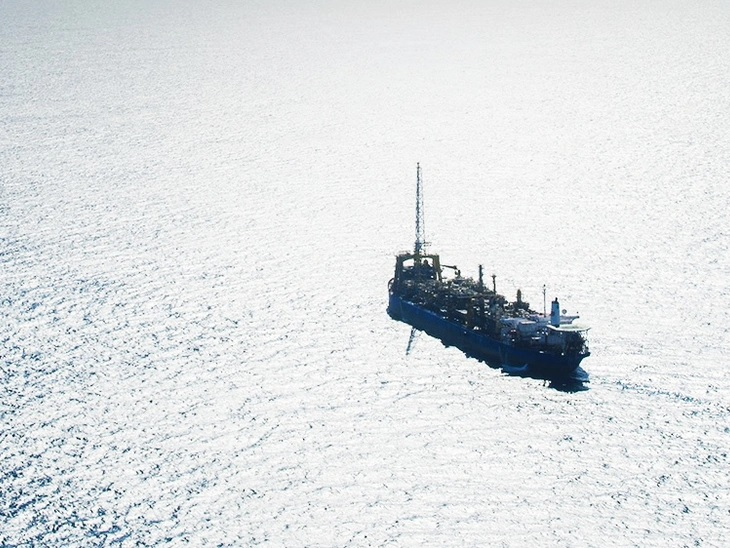Brazil produces 3,827 MMboe/d and grows 2.2% in March
T&B Petroleum/Press Office ANP
05/05/2022 14:08

In March, Brazil produced 2.981 MMbbl/d (millions of barrels per day) of oil, an increase of 2.2% compared to the previous month and 4.8% compared to March 2021. A further 134 were produced. MMm3/d (millions of cubic meters daily) of natural gas, an increase of 0.9% compared to February and 6.6% compared to the same month of the previous year. In total, 3,827 MMboe/d (million barrels of oil equivalent per day) were produced.
The data are available in the Monthly Bulletin of Oil and Natural Gas Production, with consolidated data referring to the national production of oil and natural gas in the month of March. They can also be accessed, interactively, in the Dynamic Panels of Oil and Natural Gas Production.
Pre-salt
Production in the pre-salt in March recorded a volume of 2.876 MMboe/d (million barrels of oil equivalent per day), with 2.267 MMbbl/d of oil and 96.7 MMm3/d of natural gas, which corresponded to 75 .2% of national production. There was an increase of 1.2% compared to the previous month and an increase of 8.1% compared to March 2021. Production originated from 131 wells.
Use of natural gas
In March, the use of natural gas was 97.8%. 51.7 MMm³/day were made available to the market. Gas flaring in the month was 2.9 MMm³/d, a reduction of 2% compared to the previous month and 6.2% compared to the same month in 2021.
Origin of production
In this month of March, the offshore fields produced 97.1% of the oil and 86.9% of the natural gas. The fields operated by Petrobras were responsible for 94.2% of the oil and natural gas produced in Brazil.
Highlights
In March, the Tupi field, in the Santos Basin pre-salt, was the largest producer of oil and natural gas, registering 906 MMbbl/d of oil and 43 MMm3/d of natural gas.
The Petrobras 77 platform, producing in the Búzios field through five interconnected wells, produced 156,496 Mbbl/d of oil and was the facility with the highest oil production.
The FPSO Cidade de Itaguaí installation, producing in the Tupi field, through 7 wells connected to it, produced 7.794 MMm³/d and was the installation with the highest production of natural gas.
Estreito, in the Potiguar Basin, had the largest number of onshore producing wells: 949.
Tupi, in the Santos Basin, was the offshore field with the highest number of producing wells: 61.
Marginal accumulation fields
These fields produced 293 boe/d, 92.3 bbl/d of oil and 31.9 Mm³/d of natural gas. The Iraí field, operated by Petroborn, was the largest producer, with 191.2 boe/d.
Other information
In March 2022, 273 areas granted, five areas of transfer of rights and six areas of sharing, operated by 41 companies, were responsible for national production. Of these, 63 are offshore and 221 onshore, 12 of which relate to contracts for areas containing marginal accumulations. Production took place in 6,143 wells, 466 of which offshore and 5,677 onshore.
The average API grade of oil extracted in Brazil was 28.2, with 2.1% of production considered light oil (>=31°API), 92.6% medium oil (>=22 API and <31 API) and 5.3% heavy oil (<22 API).
The mature onshore basins (long-term fields/tests in the Espírito Santo, Potiguar, Recôncavo, Sergipe and Alagoas basins) produced 95.385 Mboe/d, with 73.485 Mbbl/d of oil and 3,482 MMm³/d of natural gas. Of this total, 51 thousand boe/d were produced by Petrobras and 44.4 thousand boe/d were produced by concessions not operated by Petrobras, of which: 20,424 boe/d in Rio Grande do Norte, 16,475 boe/d in Bahia, 5,979 boe/d in Alagoas, 1,329 boe/d in Espírito Santo and 175 boe/d in Sergipe.


